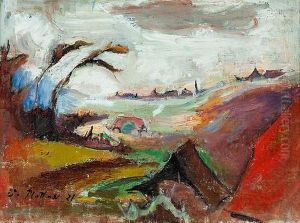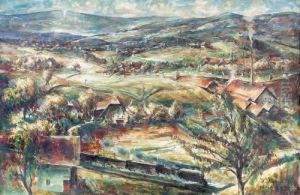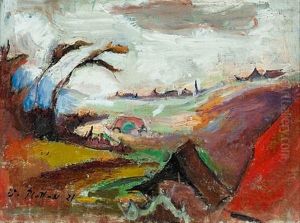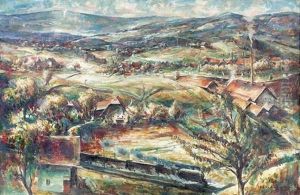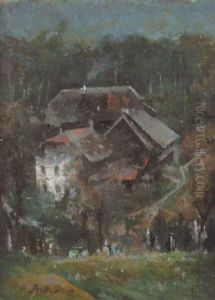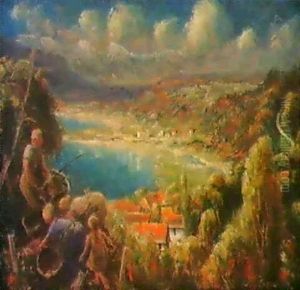Walter Plattner Paintings
Walter Plattner was an Austrian artist known for his contributions to painting and graphic design. Born in 1927, Plattner's early life and career were shaped by the cultural and political environment of post-World War II Europe. His work often reflected the complexities of the time, as he sought to explore and express his personal vision through various artistic mediums.
After receiving his education in the arts, Plattner became particularly noted for his skill in graphic design. This was a time when the field was evolving rapidly due to technological advancements and growing commercial demands. Plattner's designs were characterized by clean lines, bold colors, and an innovative use of typography, which made his work stand out in the burgeoning industry of advertising and print media.
Throughout his career, Plattner maintained a strong connection to fine art, particularly to painting. His style evolved over the years, but he consistently displayed an interest in abstract expressionism, which was gaining popularity during the mid-20th century. Plattner's paintings often featured dynamic compositions with an emphasis on color and form, which allowed him to convey emotional depth and psychological complexity. His work in this period reflected the broader artistic movements of the time, as he engaged with ideas of abstraction and the breaking down of traditional artistic forms.
Plattner's contributions to the art world were recognized by his peers and by art institutions, leading to exhibitions of his work in various galleries and museums. Despite this, he remained a somewhat elusive figure in the art historical canon, with his work being more appreciated within specialized circles rather than the mainstream art market.
Walter Plattner passed away in 2000, leaving behind a legacy of innovation and creativity that has inspired subsequent generations of artists and designers. His art continues to be studied and admired for its unique blend of graphic sensibility and painterly technique, and it remains relevant in discussions about the evolution of graphic design and abstract painting in the 20th century.
